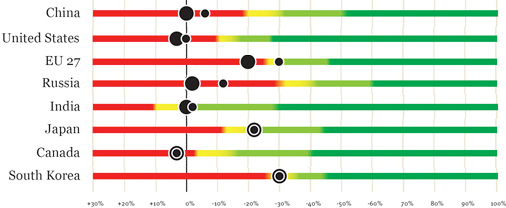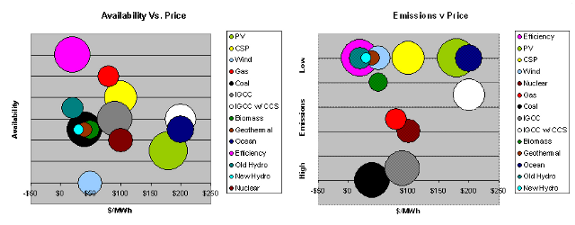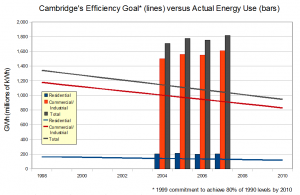Last week I wrote about the post-COP15 emissions target deadline that whizzed by for most of the planet, and tried to put it into context. Of course, the larger question of what the resulting cuts would mean with regards to future warming remained unanswered, due to it being written during the wee hours of the morning. Fortunately, someone else also crunched the numbers and compared them to model predictions, New Scientist reports, arriving at a most unfortunate (but unsurprising) answer.
Tag Archives: graph
City Council Health & Environment Committee Hearing on the Stretch Code: July 28th
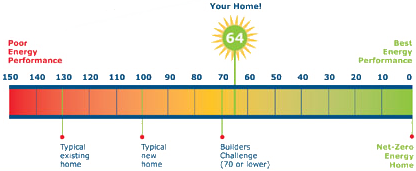
The state is upgrading the state energy code as part of the Green Communities Act. On May 12, the Massachusetts Board of Building Regulations and Standards (BBRS) approved the stretch code as an optional amendment to the 7th edition Massachusetts Building Code 780 CMR. Municipalities in Massachusetts do not have the legal authority to adopt their own code, but the recent passage of the state stretch code allows municipalities to adopt the tougher standard at their discretion.
This optional “stretch code” was developed in response to the call for improved local building energy efficiency in the commonwealth. The stretch code is about 30% more efficient than baseline code in Massachusetts. Some builders and developers worry the adoption of the stretch code will hinder a housing market revival and add additional red tape to the permitting process. Advocates contend that the stretch code will allow municipalities to improve the efficiency of buildings in their communities, helping to reduce greenhouse gasses and reduce fossil fuel consumption. See “Everything’s ACES” for additional context.
The stretch code would require a third-party certification for a HERS index rating of 60 or less on new buildings. The current base energy code in Massachusetts requires a maximum HERS rating of 99. For major renovations under the stretch code, a HERS index of 70 or less is required.
The City Council will need to adopt the stretch code by January 1 in order for it to go into effect by July 1, 2010. The City Council Health & Environment Committee is holding a hearing on the stretch code on July 28. The Climate Protection Action Committee and the Green Building/Zoning Task Force have recommended adoption.
Mind the gap.
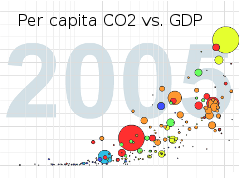 Gapminder is an organization dedicated to helping understand the world, and particularly environmental issues, by providing interesting tools for statistical analysis. They’re well-known for their Wonderbread-like bubble charts, and brief presentations by director Hans Rosling like the one at right on CO2 emissions from their “myth demolishing series.”
Gapminder is an organization dedicated to helping understand the world, and particularly environmental issues, by providing interesting tools for statistical analysis. They’re well-known for their Wonderbread-like bubble charts, and brief presentations by director Hans Rosling like the one at right on CO2 emissions from their “myth demolishing series.”
See also Worldmapper.
The Case for Efficiency…
…in pretty graphic form: More abundant and cheaper than the alternatives.
While cleaning out my bookmarks this past weekend—afterall, a little spring cleaning was in order since I’ve collected tens of thousands of links in the past decade on topics ranging from unconventional toilet tank retrofits to a still-useful subway map that predates the MBTA trip planner—I rediscovered these slightly dated but insightful graphs comparing different technologies for furnishing additional electric power. Unfortunately, it does not include figures for my pet mode of generation: Extraplanetary Solar Power.
Cambridge’s Efficiency Goal Gap
Recently, we’ve begun some efforts to analyze and map energy use data in the City, and a volunteer created this compelling graph that roughly demonstrates how far Cambridge is from meeting its goal to reduce emissions to pre-1990 levels. Of course the graph actually plots electricity use, and not emissions but the two are well correlated, and we hope to have a more complete graph of emissions including natural gas in the future.
Note: Due to limitations in the available data, energy use for some apartments is included in “Commercial.”
If you’d like to learn more about improving energy use in your home or office and receive an audit visit the Cambridge Energy Alliance.

